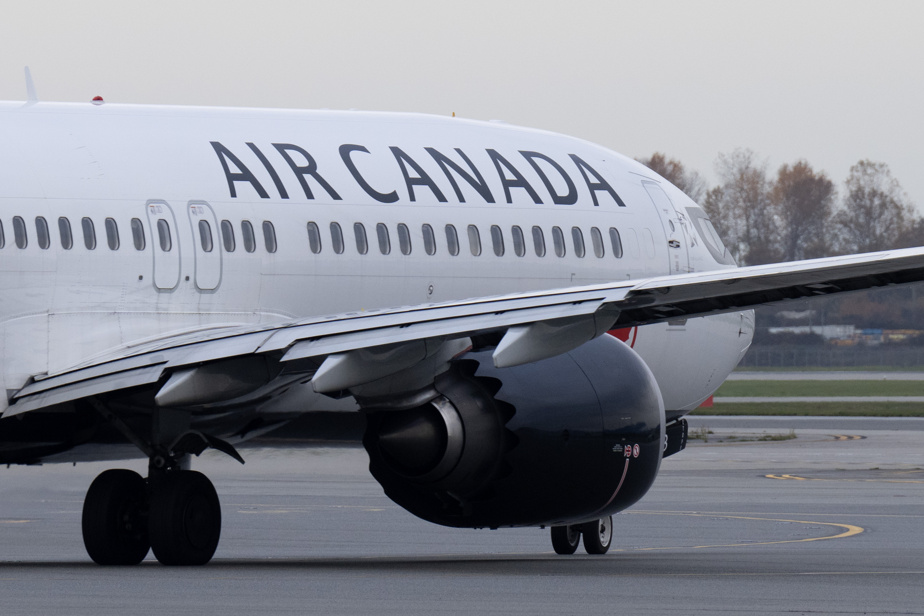(Montreal) Air Canada is appealing a decision by the country’s transportation regulator that seeks to improve accessibility for travelers living with disabilities.
The action before the Federal Court of Appeal seeks to overturn a Canadian Transportation Agency order requiring the airline to accommodate passengers whose electric wheelchairs do not fit through the cargo door of a scheduled plane.
The Canadian Transportation Agency’s decision marks the culmination of a case that has dragged on since 2016, when passenger Tim Rose was told his electric wheelchair would not fit on the plane, preventing him from travel to Ohio as planned.
The organization asked Air Canada to either find similar flights on a comparable route or swap planes to have one on the route that could carry the electric wheelchairs.
Mr Rose says the latest move is “disappointing”, particularly after the carrier welcomed new measures in November to improve the travel experience for passengers with disabilities.
“I feel like Air Canada is talking out of both sides of its mouth right now. The hypocrisy is that, on the one hand, they are suggesting that they are trying to improve. On the other hand, they continue to fight against my already made decision which ensures dignity and accessibility to all Canadians who use a wheelchair,” he confided.
While at Vancouver International Airport for an announcement, the federal Minister of Transport, Pablo Rodriguez, also said he was surprised by Air Canada’s decision.
“I haven’t seen the details of the call, but in terms of accessibility efforts, we need to do more, not less. I’m a little surprised by Air Canada’s call, especially since I met with them last month on this. In terms of accessibility, I made it clear to the president of Air Canada, his team and the other companies; “we must do more and not less,” declared Mr. Rodriguez on Thursday afternoon.
Air Canada says it has agreed to most of the ruling’s orders to remove obstacles, including the requirement to find a plane that departs within a day of the desired travel date, provided the customer makes the request three weeks in advance. advance.
The carrier indicates that it contests the obligation to change planes at short notice for shorter routes.
In the summer of 2016, Mr. Rose was told he couldn’t book a flight from Toronto to Cleveland where, “ironically enough,” he was scheduled to give a presentation on disability awareness, he said. -he says.
In 2022, a Transportation Agency tribunal concluded that it and all people who use large mobility aids face undue barriers to mobility at Air Canada.
This conclusion came after long discussions between the two parties. It also follows a 2019 decision establishing that there were barriers to mobility, but not necessarily unjustified ones.
The 2023 decision noted that the airline deploys replacement planes daily in response to all sorts of issues, from bad weather to mechanical issues, and so it should be able to do the same for accessibility.
In its Dec. 21 notice of appeal, Air Canada argues that the requirement to swap planes with larger cargo carriers represents an undue hardship on the carrier, placing it at a competitive disadvantage. Some of these doors are just over two and a half feet high, while many power wheelchairs can only be folded to a height of three feet.
The agency did not consider all factors or apply the appropriate analysis to determine what constitutes such a hardship, the petition reads.
A series of measures
Launched in September, the appeal process began a few months before Air Canada CEO Michael Rousseau apologized for the company’s accessibility shortcomings.
In a press release, it said the carrier would accelerate the implementation of a three-year accessibility plan after a number of recent cases of passenger mistreatment, including an incident in which a man reached with spastic cerebral palsy was forced to drag himself off a plane in Las Vegas due to a lack of assistance.
The airline’s planned measures range from creating a director of customer accessibility position to giving priority boarding to passengers who request elevator assistance.
Air Canada also intends to implement annual and periodic accessibility training for its 10,000 airport employees and include mobility aids through a mobile application.
The airline’s appeal also challenges the regulator’s order requiring it to consider electric wheelchair accommodations in its accessibility plan, particularly when it comes to the purchase and of aircraft selection on Canada–United States routes.
The agency does not have the jurisdiction or authority to impose content on this plan, Air Canada said in a document filed last year.
